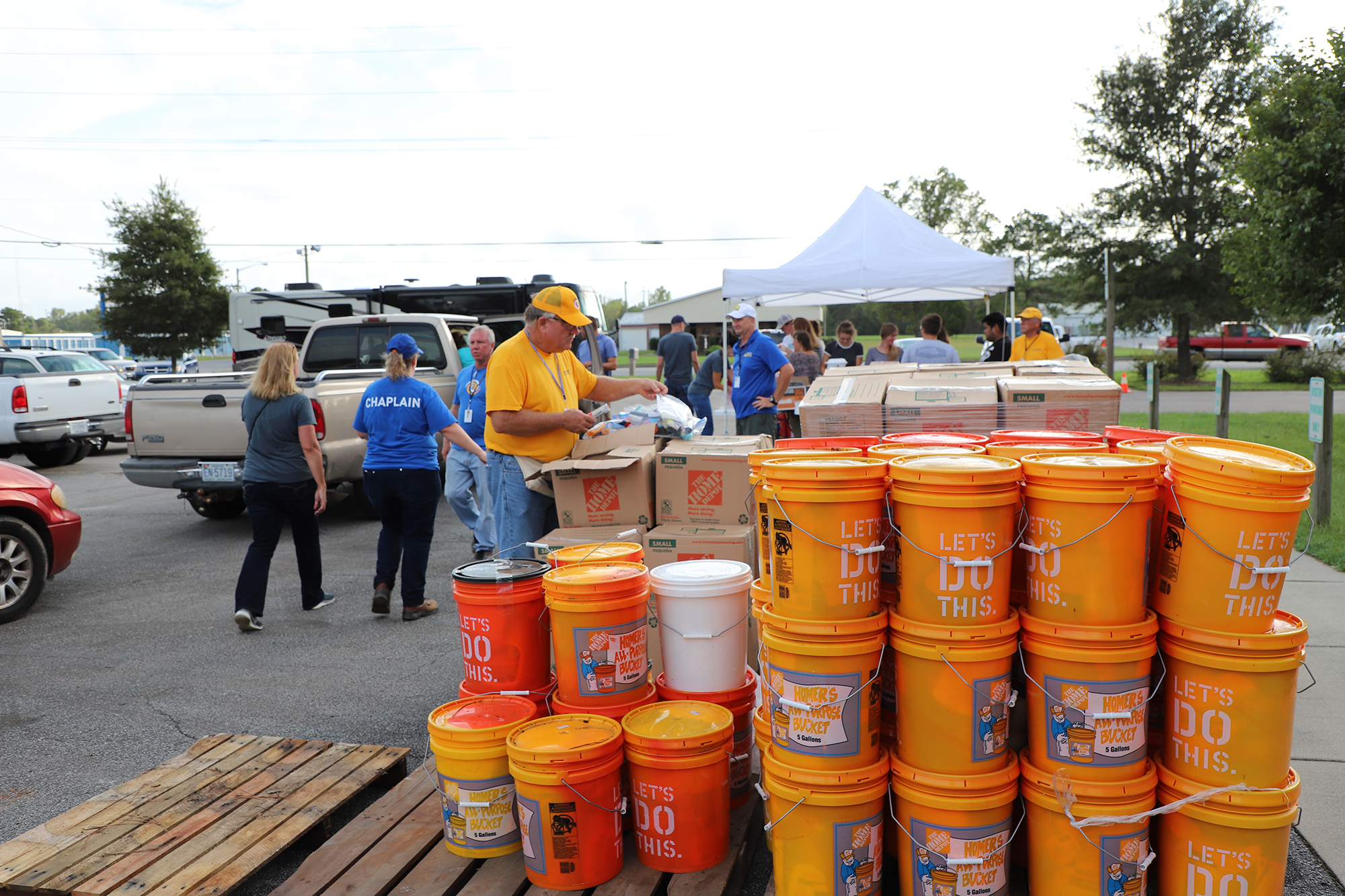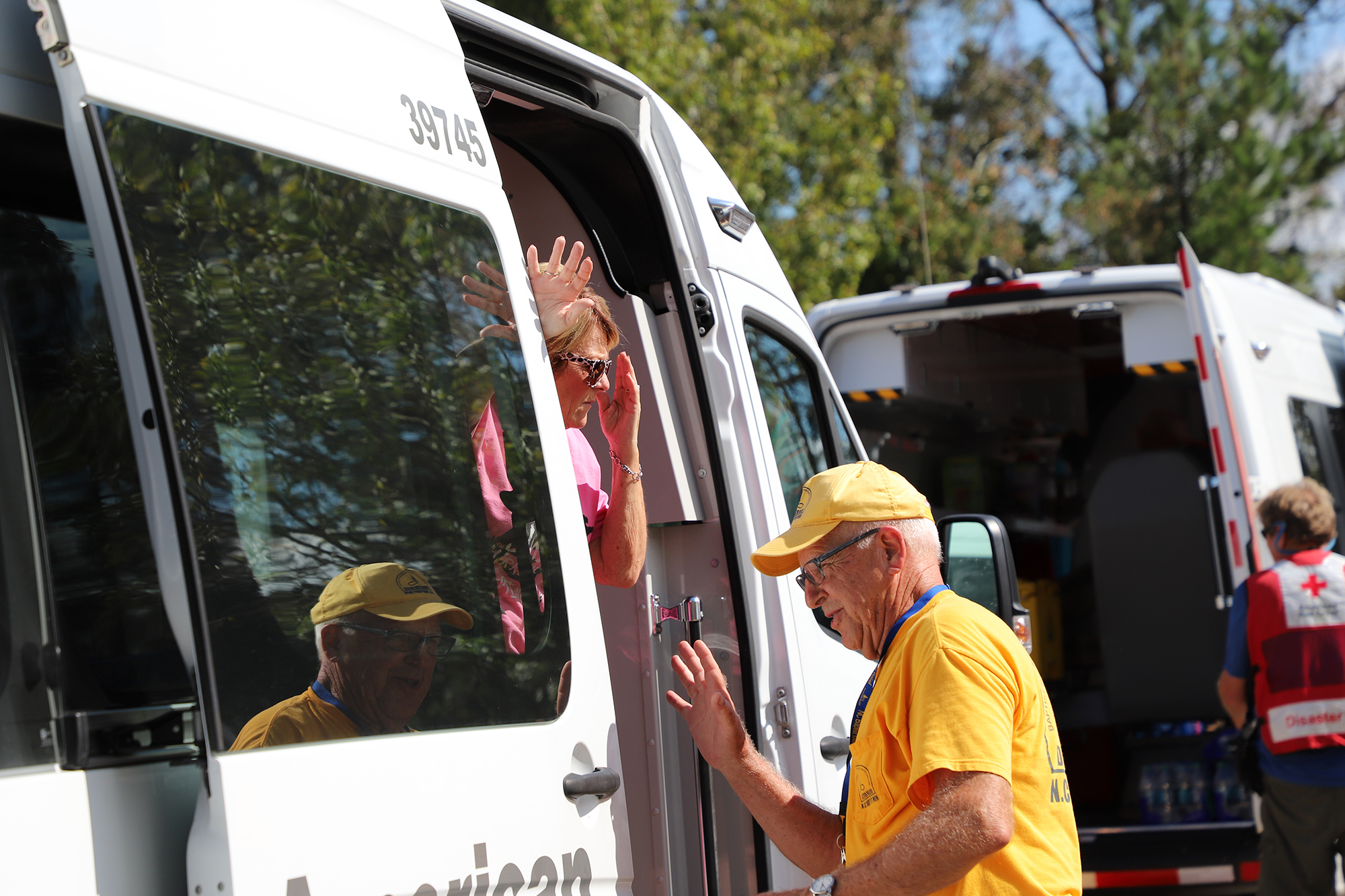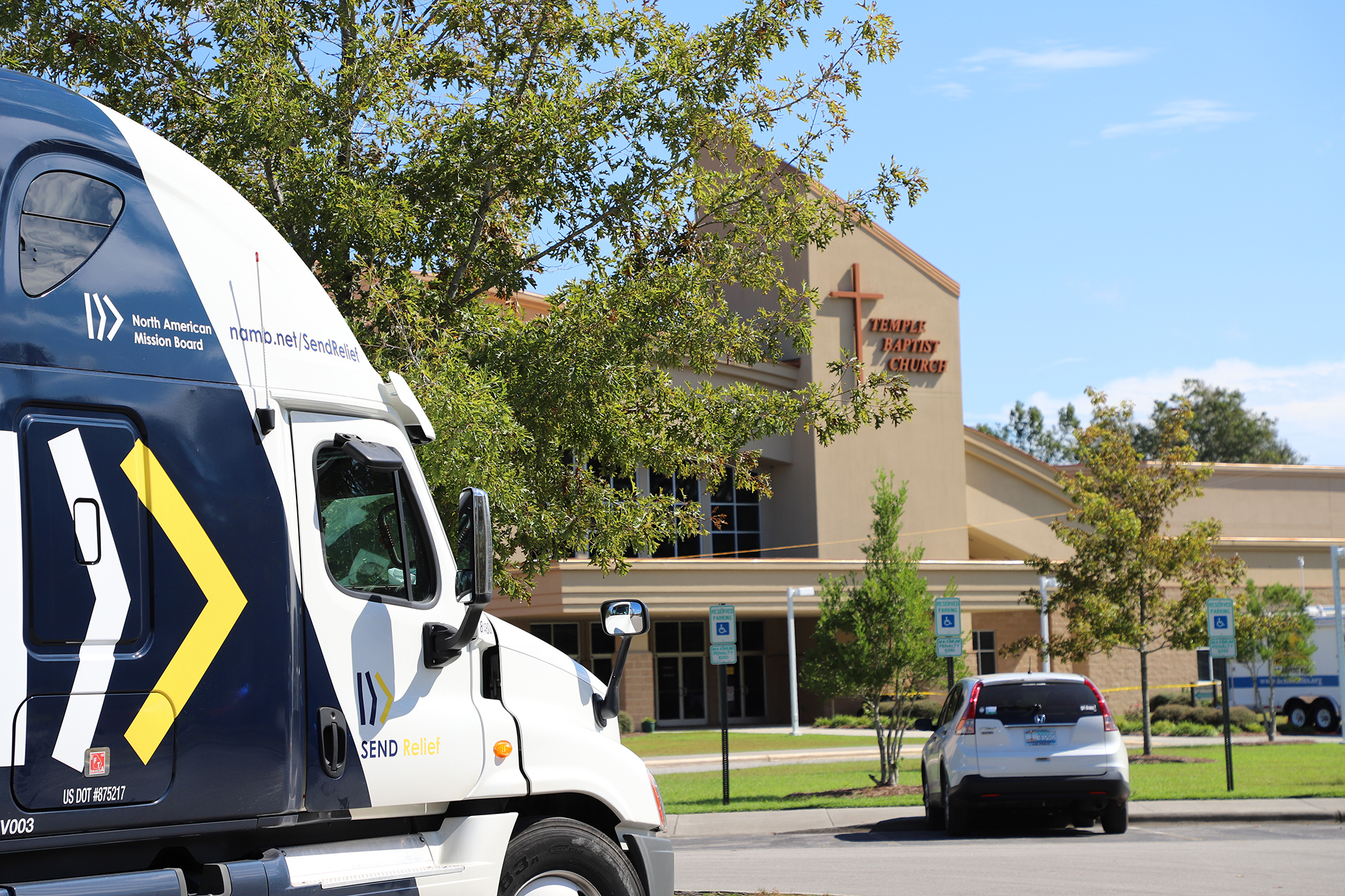
NEW BERN, N.C. (BP) — The sun began peeking through the clouds over New Bern, N.C., Tuesday morning (Sept. 18) after Hurricane Florence devastated the community. Despite the brief reprieve from rain, there are concerns flooding may worsen as water flows back to the Atlantic from farther inland.
 Memories are still fresh from the last big storm to hit the state. After Hurricane Matthew blew through North Carolina in 2016, the storm surge and rain afflicted coastal towns, and the resulting runoff created a resurgence of flooding over the next few days in cities like New Bern.
Memories are still fresh from the last big storm to hit the state. After Hurricane Matthew blew through North Carolina in 2016, the storm surge and rain afflicted coastal towns, and the resulting runoff created a resurgence of flooding over the next few days in cities like New Bern.
“We’re at the bottom of the mountain, right here at the bottom of the hill,” said Jim Pennington, pastor of Temple Baptist Church in New Bern. “All that rain water now will get here Thursday and we will be cut off again … [Hurricane] Matthew did that” in 2016.
Standing water from the initial flooding remains along stretches of Highway 70 from Kinston, N.C., to New Bern, and flood waters continue to fester around businesses and churches along that stretch.
At Temple, Southern Baptist Disaster Relief (SBDR) volunteer teams from North Carolina Baptist Men continue preparing meals out of a mobile feeding kitchen known as Manna 1, one of the largest food trucks ever built.
“Standing here in New Bern and watching the steady flow of people who are coming for help is a reminder of just how desperate the need is,” said David Melber, president of Send Relief, the compassion ministry arm of the North American Mission Board. “People are not only worried from the initial flooding from Florence but also the runoff that will be coming in the next several days.”
Across North Carolina, white tents have popped up in eight sites across North Carolina to begin feeding residents who are recovering from Florence. SBDR teams from North Carolina, Virginia, Alabama, Kentucky, Tennessee and Missouri are already active with the expectation that teams from Florida and Mississippi should be set up and ready to start feeding in the next few days.
 “North Carolina Baptists have one of the largest and best equipped disaster relief teams,” said Sam Porter, NAMB’s national director of SBDR. “All of our Southern Baptist state conventions have been working overtime to ensure that needs are met, whether through actively bringing teams or through their heartfelt prayer.”
“North Carolina Baptists have one of the largest and best equipped disaster relief teams,” said Sam Porter, NAMB’s national director of SBDR. “All of our Southern Baptist state conventions have been working overtime to ensure that needs are met, whether through actively bringing teams or through their heartfelt prayer.”
Along with their feeding equipment and volunteers, SBDR teams have also been asked to bring flood recovery and chainsaw teams. Assessment teams have been evaluating the need so recovery can begin.
Southern Baptist chaplains are also active in communities across the affected areas in North and South Carolina.
“I talked with a husband and wife this morning, trying to connect them with Temple Baptist Church because they lost everything,” said Doc Marshall, chaplaincy coordinator for the New Bern site and a member of Spring Hill Baptist Church in Wagram, N.C.
“We’re like the spiritual first aid,” Marshall said, “and we try to connect people with local churches so that they can get help over the long term.”
Jim George, pastor of Fairview Baptist Church in Fredericksburg, Va., relieved Dean Miller as the leader of the feeding and recovery site in Washington, N.C. Their team from the Baptist General Association of Virginia is serving about 6,500 meals a day through the county’s emergency operations center, The Salvation Army and the American Red Cross.
 “Dean loves missions and I love missions,” said George, “and we love helping people in Christ’s name.”
“Dean loves missions and I love missions,” said George, “and we love helping people in Christ’s name.”
Other active feeding sites include the cities of Wilmington, Kinston, Hope Mills, Jacksonville, Lumberton and Wallace in North Carolina. Feeding continues in Conway and Florence, S.C., as well.
A Send Relief semi-trailer of flood recovery supplies made deliveries to the Washington and New Bern sites on Monday and Tuesday. A second Send Relief semi-trailer will be arriving later in the week to serve sites in and around Wilmington.
Florence projects to be more catastrophic than Hurricane Floyd, which struck the eastern coast of North Carolina in 1999. Floyd produced 500-year floods in every county on the coastal side of the state and wrought an estimated $6.5 billion in damage.
Porter called Florence the “the East Coast Harvey” after the system hovered over North and South Carolina, dropping feet of rain on entire regions as Hurricane Harvey did over the Houston in 2017.
Southern Baptist Disaster Relief is among the three largest providers of disaster relief assistance in the United States. Southern Baptist churches, associations and state conventions all partner to mobilize volunteers, resources and equipment to provide services. NAMB provides national coordination and assistance in larger, multi-state responses.
















